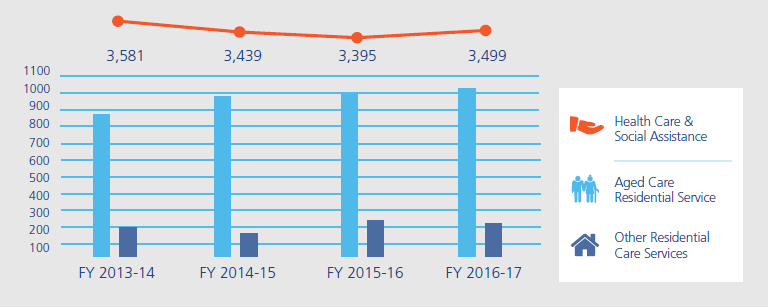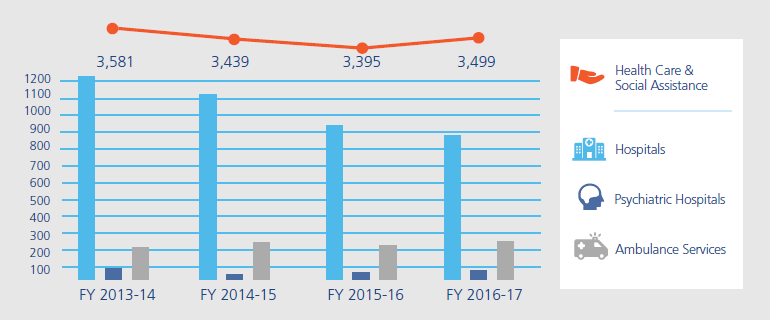Please see SA Health for the latest COVID-19 information for care workers including correct use of PPE.
As the number of people ageing or with a disability increases, so too does the trend for people requiring care to stay in their own homes rather than move into traditional residential aged care settings. Therefore there is also a greater demand for services to provide the community-based care, support, assistance or maintenance services they need.
The wide range of home support and community care providers, including nurses, carers, cleaners, housekeepers, property maintenance and pharmacy services, highlights the need for guidance in managing the varied work health and safety (WHS) issues that can arise when such services are provided within homes or community settings.
There are a range of risk factors that can impact health professionals' mental heath and wellbeing at work.
These include:
- heavy workloads
- long working hours
- shift work
- compassion fatigue
- occupational violence
- exposure to trauma
- bullying and harassment
- abuse/mistreatment from patients and patients’ families.
Our Community Workers – Work health and safety guidelines can help you to address WHS issues and manage hazards that you may face, such as:
- hazardous manual tasks
- vehicle and driver safety
- infection control
- isolated/remote work
- challenging behaviours.
Injuries
Aged care

Top 3 injuries
- Joint, ligament and muscular trauma - 57%
- Musculoskeletal diseases - 18%
- Wounds, amputations and internal organ damage - 10%
Who is being hurt
- Personal carers
- Enrolled nurses
- Cleaners and laundry workers
- Food preparation assistants

Hospitals

Top 3 injuries
- Joint, ligament and muscular trauma - 58%
- Musculoskeletal diseases - 16%
- Wounds, amputations and internal organ damage - 9%
Who is being hurt
- Registered nurses
- Ambulance officers and paramedics
- Enrolled nurses
- Personal care and nursing assistants
- General clerks





